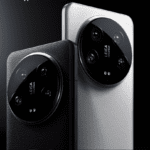Your cart is currently empty!
Have you noticed a swarm of zippy, silent scooters buzzing around your city lately? India’s urban landscapes are witnessing a surge in electric scooters, and it’s not just a fad. This two-wheeled wonder is fast emerging as an obvious response to the growing challenges faced by Indian cities: traffic congestion, air pollution, and the need for efficient transportation. While the concept of electric scooters dates back to the early 90s (Peugeot’s Scoot’Elec), limited battery technology held them back. India’s embrace of electric scooters began in the early 2000s (REVA’s i models) with the introduction of a new generation of silent, efficient two-wheeled transportation.
Why Electric Scooters are Winning Hearts (and Wallets!)
In 2018, India’s megacities choked with traffic, were costing the country an estimated $22 billion annually in lost productivity. Air quality suffered too, with twenty-one of the world’s 30 most polluted cities were from India. Traditional vehicles majorly contributed to this pollution, especially the smog.
A public yearning for cleaner air and smoother commutes began to reshape the way people viewed transportation. This shift in mindset paved the way for electric scooters to be the knights in shining armour for Indian cities. These compact and agile machines occupy significantly less space than conventional two-wheelers, potentially easing traffic flow. But the biggest perk? Zero tailpipe emissions. Electric scooters breathe new life into Indian cities.
The benefits go beyond just the environment. Electric scooters are easy on your wallet too! They can slash your fuel costs by a whopping 90% compared to traditional petrol scooters. You will save money on fuel costs and potentially reduce maintenance expenses due to the simpler electric drivetrain.
Electric scooters also address the challenge of “last-mile connectivity,” a major hurdle in Indian cities with expanding public transport networks. NITI Aayog, in its 2022 report, also emphasizes on the ability electric scooters in bridging the gap between metro stations and final destinations. This shows a meaningful change in perspective for electric scooters and makes them a success story.
Affordability and A Brighter Future
While electric scooters offer significant economic benefits overall through lower running costs, the upfront purchase price can be a deterrent for some. Currently, electric scooters range from ₹40,000 to ₹1.5 lakh, placing them at a slight premium compared to traditional petrol scooters.
Government policies can play a crucial role in making electric scooters more affordable. Subsidies on electric scooter purchase, tax breaks, and lower registration fees can significantly bring down the upfront costs. Additionally, promoting easy loan options with attractive interest rates can further incentivize electric scooter adoption.
A Gendered Perspective
Electric scooters have the potential to be particularly transformative for women in India. Easy manoeuvrability, coupled with a sense of independence and safety, can empower women to navigate city streets more confidently. Furthermore, the economic benefits of electric scooters can contribute to greater financial independence for women, especially in lower strata of society.
The Road Ahead
The electric scooter market in India is revving up for a fantastic ride! By 2030, the market is expected to zoom past a whopping $6 billion, fuelled by the factors like environmental pollution, traffic congestion, and cost saving. This is a significant jump from the $893 million market size recorded in 2022.
The surge in popularity of electric scooters transcends mere considerations of convenience and affordability; it is profoundly influenced by mounting environmental apprehensions. According to the EY’s 2022 Mobility Consumer Index, over 50% of prospective vehicle purchasers are inclined towards opting for either fully electric, plug-in hybrid, or hybrid vehicles. Moreover, projections by McKinsey (2023) indicate a staggering estimation that 60-70% of new two-wheeler sales in India will be electric by 2030. This trajectory harmonizes seamlessly with global climate objectives and governmental endeavours aimed at mitigating air pollution and enhancing traffic conditions.
Undoubtedly, every new technological advancement encounters its share of challenges. Presently, a notable impediment to broader adoption of electric scooters is the scarcity of charging stations. Furthermore, establishing effective battery disposal mechanisms is imperative to guarantee long-term environmental sustainability. Addressing these issues will be pivotal in facilitating the seamless integration of electric scooters into mainstream transportation systems while upholding ecological stewardship.
The good news? The future of electric scooters in India is bright and booming. To tap into this potential, more investments in a robust network of charging stations through government initiatives and private partnerships along with battery recycling policies are crucial. Public awareness campaigns can further drive adoption by educating people about the environmental and economic benefits, along with safety aspects. By overcoming challenges and embracing the possibilities, electric scooters can indeed become a game-changer, promising cleaner cities, reduced traffic congestion, and a more breathable future.




